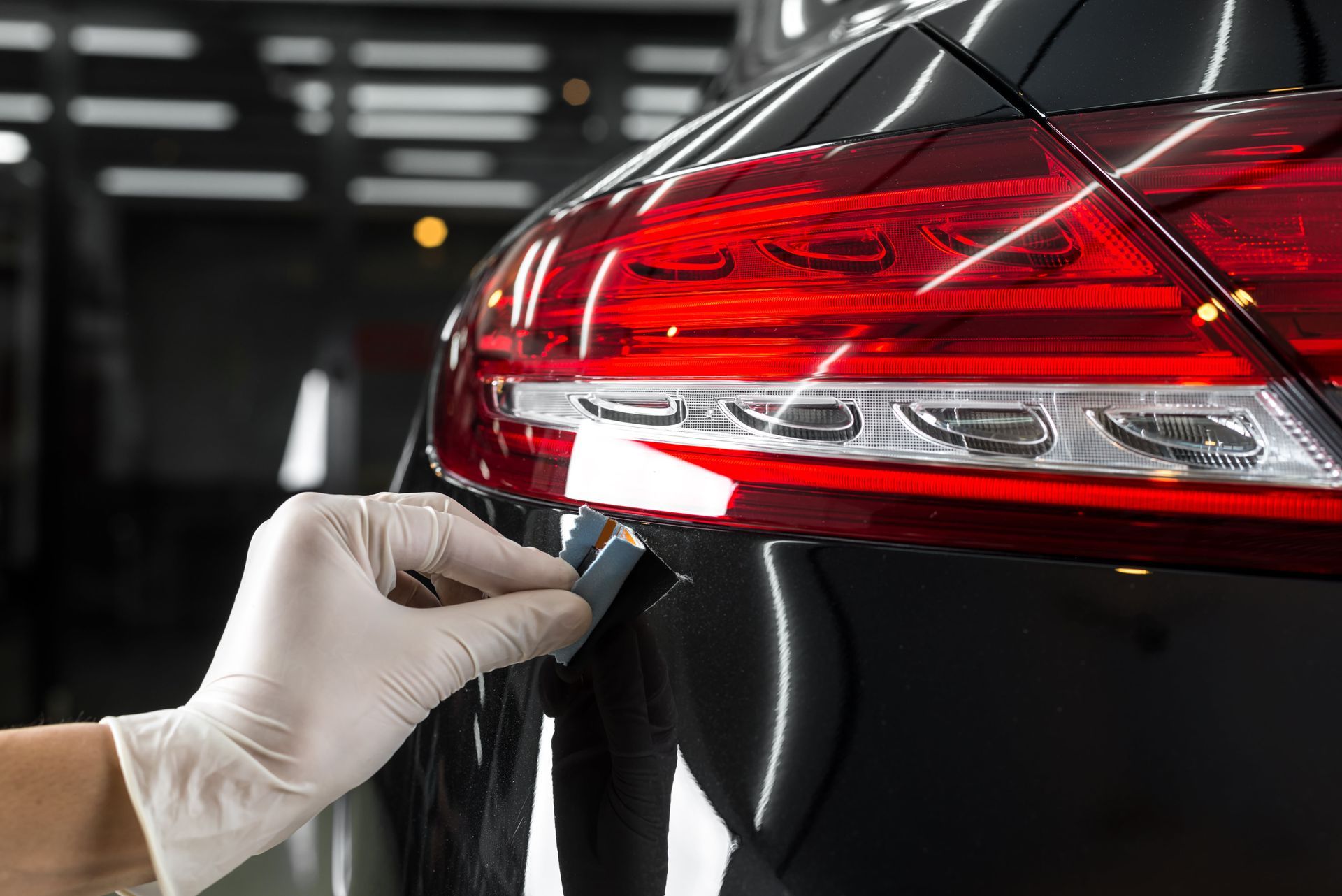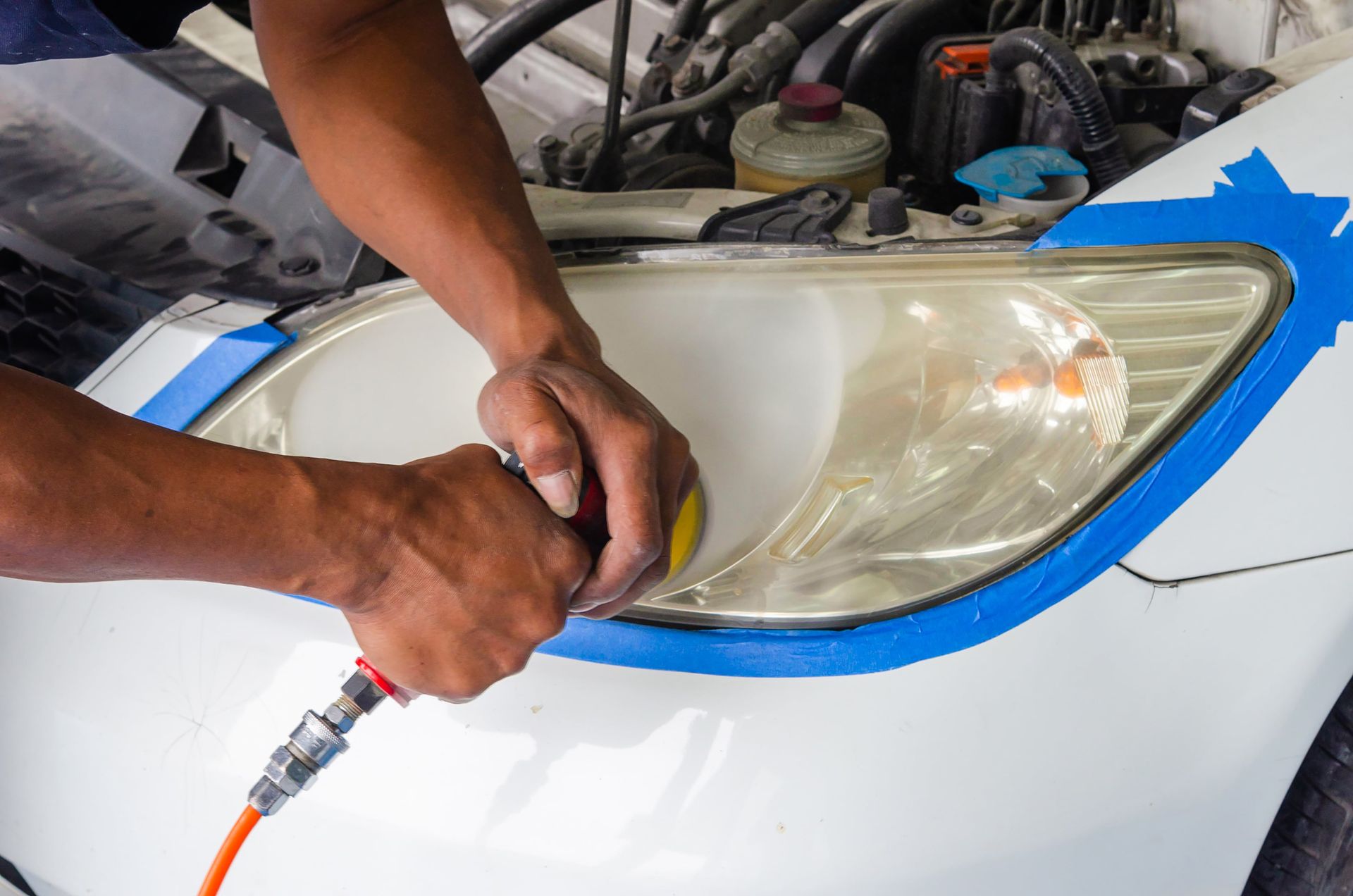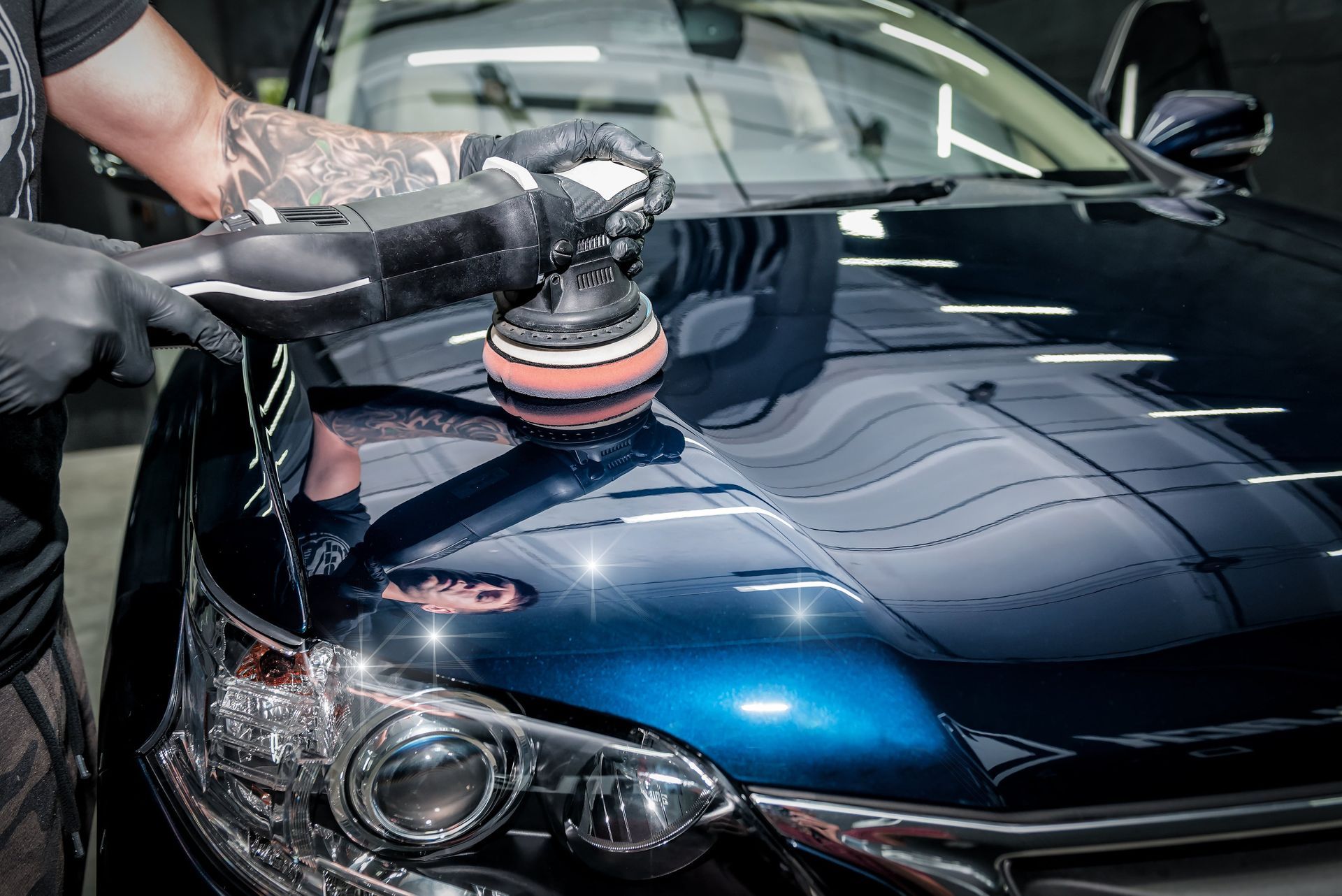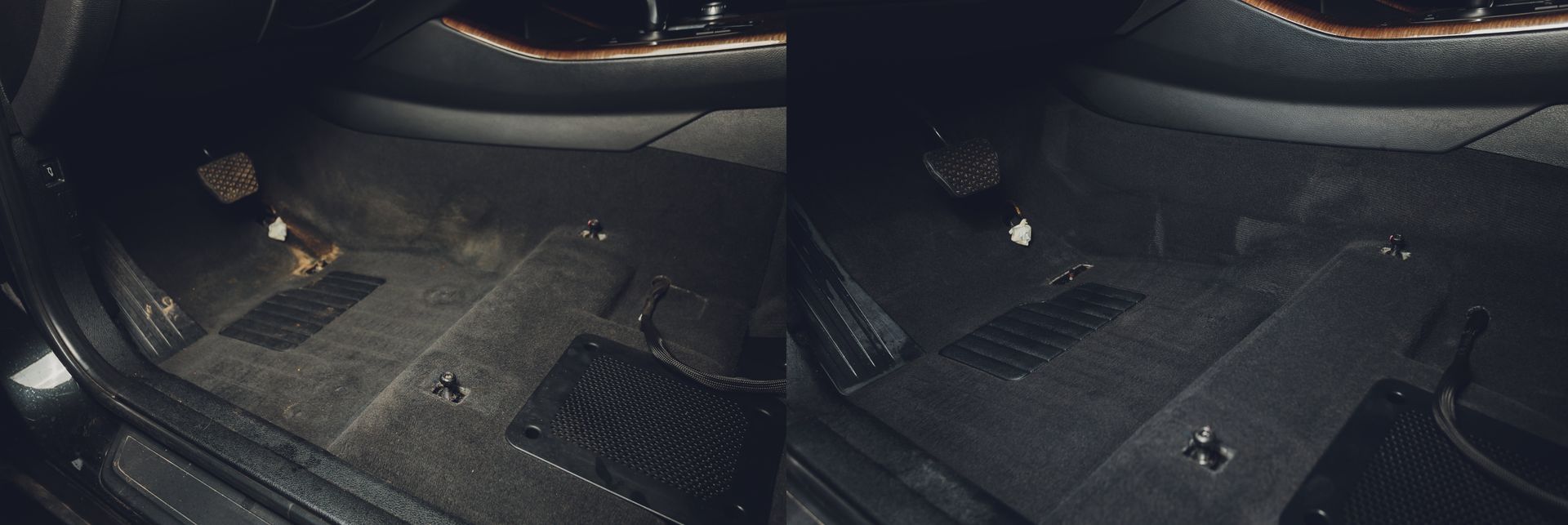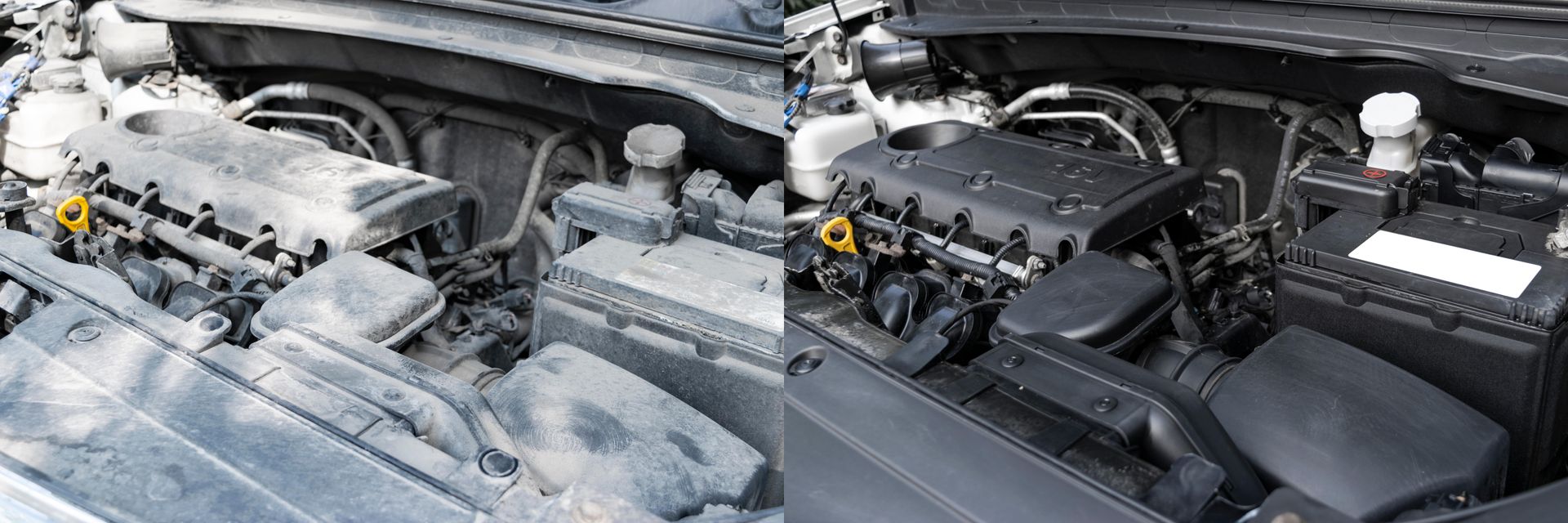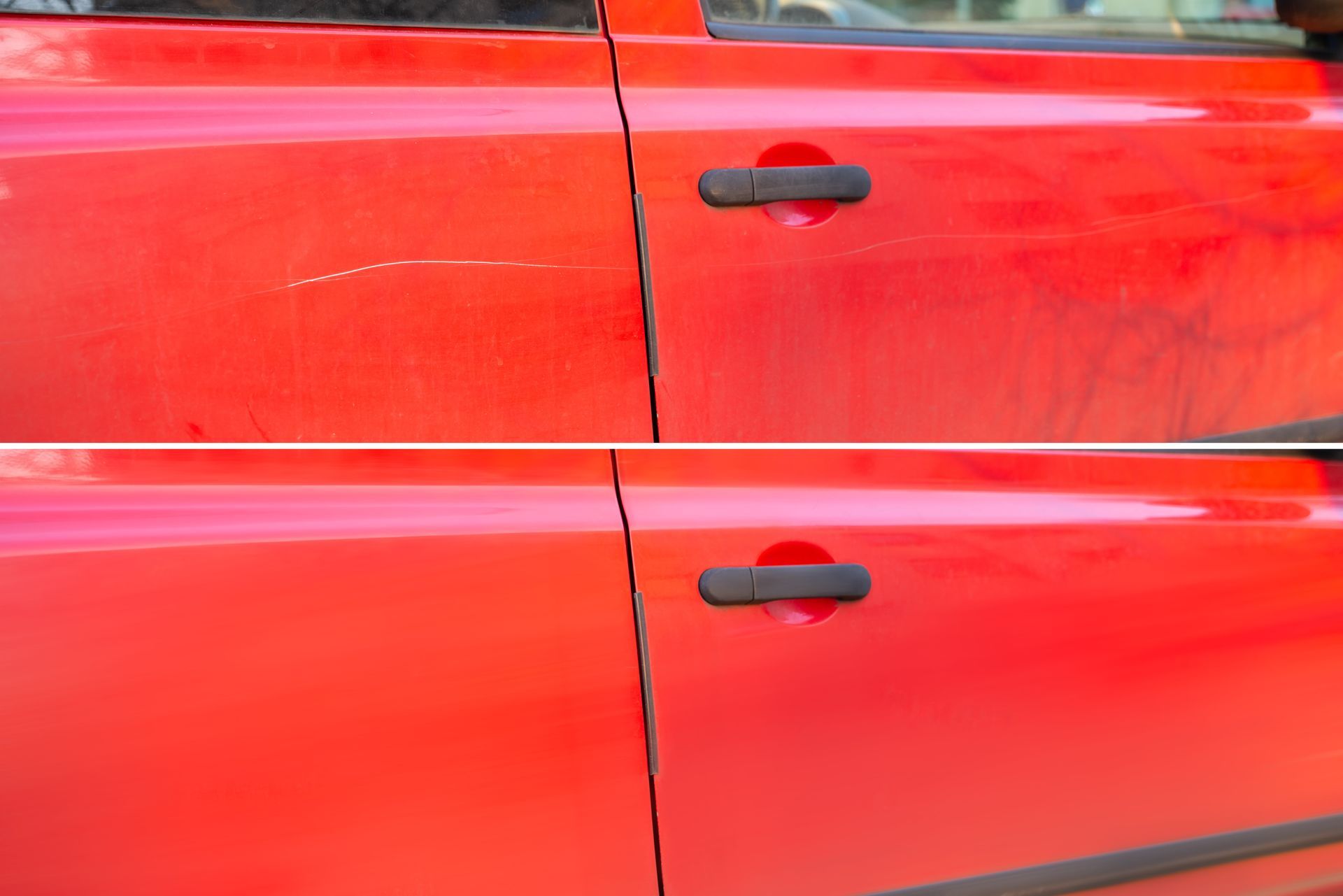When should I have my car's paint corrected?
You should consider paint correction when you notice the paint looks dull or faded. You may even see scratches, swirl marks, or hazing on the surface. If you'd like to have a protective coating applied to your car, we also recommend fixing minor imperfections before doing so. Wax and ceramic coatings adhere better to smooth, clean surfaces. Paint correction can also help your vehicle's resale value.
How is paint correction performed?
Wash the car thoroughly
It is best to clean the area to be worked on before beginning the correction process. Removing dirt, sap, tar, etc., is essential for the best results. Typically, car detailers will use a specialized decontamination spray or clay bar treatment to ensure all contaminants are removed. This will ensure no further damage to the paint during the correction process.
Inspect the scratched surface
To have a complete grasp of the damage to the paint, thoroughly inspect the surface under a light source. This will provide a better visual of any scratches,
swirl
marks, or other imperfections. One technique is to run your thumbnail over the scratched surface. If it doesn't catch, the correction process will only require polishing because only the clear coat is damaged. The scratch may require more extensive paint correction techniques if the scratch is deeper.
Measure the thickness of the paint
Use a paint thickness gauge to level the thickness of the paint in the correction area. This is important because we don't want to remove too much paint and expose primer or metal.
Match the level of the surface
Once we understand the extent of the damage, the appropriate compound will be chosen to level the area to be repaired. This is completed by applying the compound to a microfiber cutting pad attached to a rotary tool. We'll apply pressure in overlapping patterns to ensure uniformity. The top layer of paint is removed to smooth out scratches and other defects.
Repeat the polishing process
We'll repeat the process of applying car polish with decreasing levels of abrasiveness. For the best job, this usually requires several stages until the desired level of correction is met.
Apply a protective coating
A protective coating such as wax or ceramic will be applied once we're satisfied with the results from polishing. The coating will protect the corrected paint from future damage. Ceramic coatings typically last 3-5 years and offer the best protection and visual appeal.
Final inspection
We'll thoroughly inspect the corrected area using the same technique as before. We use a light source to help show any missed spots and ensure the area is smooth and glossy. We'll be sure we've done an amazing job to ensure your satisfaction.
All Services
Exterior Detailing
Interior Detailing
Paint Correction
Headlight Restoration
Engine Bay Cleaning
Boat Cleaning
Ceramic Coating
RV Cleaning
Carpet Deep Cleaning
UV Protectant
Plastic Trim Restoration
Leather Conditioning
Scratch Removal
Polishing
Clay Bar Decontamination
Waxing
Buffing
How long does paint correction take?
The paint correction process has many variables determining the time it takes. Some of these include the size, condition of the vehicle, and level of correction needed. Correcting a minor defect on a small passenger car may take a few hours; fixing more serious problems on a large SUV could take a whole day. Paint correction is a meticulous process that requires great attention to detail. This means it can't be rushed. Give us a call for your free estimate!
Ocala Detailing Pros provide the perfect solution for car owners who want the best vehicle care. These services provide peace of mind by offering convenience, professional care, time-saving, and quality assurance. By choosing Ocala car detailing, you can ensure your vehicle looks and feels brand new. This is made possible by a stress-free car care experience right at your doorstep.
